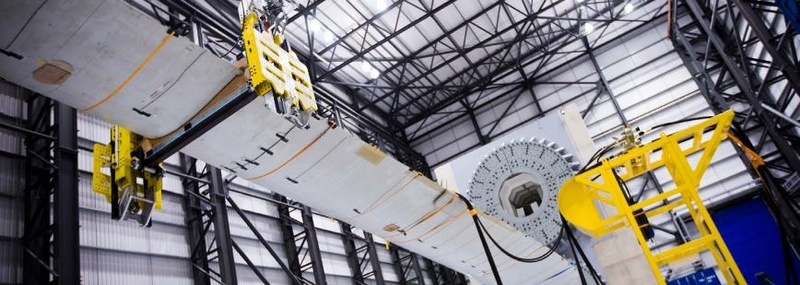Inside UK Wind - Blog: Good things come to those who wait?
Last week, for many wind energy companies, was like being one of the surfers in the classic Guinness advert, “He waits, that’s what he does”. The payoff, of course, is that good things come to those who wait.
This week, that seems partly true. From almost £1.2bn of bids, Government has offered contracts of some £315m. So we know that while there have been successes, with companies hopefully celebrating how they have navigated these previously untested waters, there will be more people conducting a review to see what they might have done better, and wanting to see what their competitors have done differently.
The question many will be asking is; how do I make this boat go faster? How do I make this project fly? What can I do to compete in the next auction?
The big winners of the auction have been offshore wind and onshore wind. And successful bidders have shown that industry is managing its costs, and able to respond well to the demands of competition. This helps consumers of course, but also suggests that our industry can continue to grow and thrive in this strong marketplace.
We can now see how onshore wind and solar are in competition, and both have strong claims about cost effectiveness and the fact that they are cheaper than new nuclear already, and on the way to being cheaper than new gas plant. Those who want decarbonisation but object to onshore renewables like wind and solar have some explaining to do about how they would deliver.
Fifteen onshore wind farms - almost 750MW – received an offer of support. That’s a good result for onshore wind. Government will be pleased to see the onshore industry shifting focus from the RO to the CfD. In turn industry will want assurances about keeping CfD auctions open to onshore wind. Competition between projects and between comparable technologies will work if it is open.
And offshore wind has also had a good day. Two projects secured support; one in England developed by a Scottish utility, and one in Scotland developed by a leading independent using project finance. Two projects will be better for the wider supply chain, and hopefully demonstrate the importance of having sufficient allocation for less established technologies.
And as today’s Cost Reduction Monitoring Framework (CRMF) – published by the Offshore Renewable Energy Catapult on behalf of the Offshore Wind Programme Board – has underlined, offshore has been managing its costs well and innovation, partnership and technology advancement mean that the sector is ahead of target to hit £100/MWh. The CRMF shows that the biggest single contributor to this is the shift to bigger turbines. And of course we know that this move from the 3MW to the 6MW machines was the catalyst to enabling Siemens to commit to UK blade and nacelle manufacturing. And the development of 8MW machines has seen MHI Vestas Offshore commit to UK blade manufacture.
But these new strike prices also show that this move up a gear from 3 to 6MW is not the limit of action we can take on cost. The prices bid by Mainstream and ScottishPower Renewables show those companies are bullish about their ability to continue driving costs down while building successful projects.
But as I said at the start, there are people who have not had so good a day, and today will be one of review. Of course these companies need to take stock and decide on their approach to a 2016 auction. To help them make that decision, we need the next Government to commit early to continuing the auction timetable. Kickstarting the 2015-16 process will be vital to maintain the momentum achieved today, and assure the wider developer and investor community that there remains a market worth competing in. Chasing a diminishing budget and scrapping over the last bits of a levy control framework is not the best way to build out a competitive market, but it will be what happens without an early commitment on the next auction, and decisions on a levy control framework to take us into the 2020s.
By the end of March the successful developers have to sign and return these contracts and then start delivery. Also at the end of March will be RenewableUK’s CfD Summit – our first chance to come together and review the results and look forwards to what happens next. Anyone interested in learning more should book a place quickly before the event fills up.
For the wind sector as a whole, today shows progress and an industry confident of its ability to deliver significant low carbon generation, while delivering cost reduction. That can only be good news for the UK economy and all energy consumers. Lessons need to be learnt from this first auction process, but the main thing to remember is that the best way we build on the success of this auction is to stick to the plan of action. That means an early decision on the next auction process, and an allocation that supports different technologies and different companies in bidding in confidently. The result shows that this is possible for wind, and for other technologies like solar.
To receive more information on this article, our Newsletter or find out more about what w3.windfair.net has to offer, please, do not hesitate to contact Trevor Sievert at ts@windfair.net.
Please don't forget to follow us on Twitter: w3.windfair.net on Twitter
w3.windfair.net is the largest international B2B internet platform in wind energy – ultimately designed for connecting wind energy enthusiasts and companies across the globe.
- Source:
- RenewableUK
- Author:
- Edited by Trevor Sievert, Online Editorial Journalist / by RenewableUK Staff / Maf Smith
- Email:
- ts@windfair.net
- Link:
- w3.windfair.net/...

